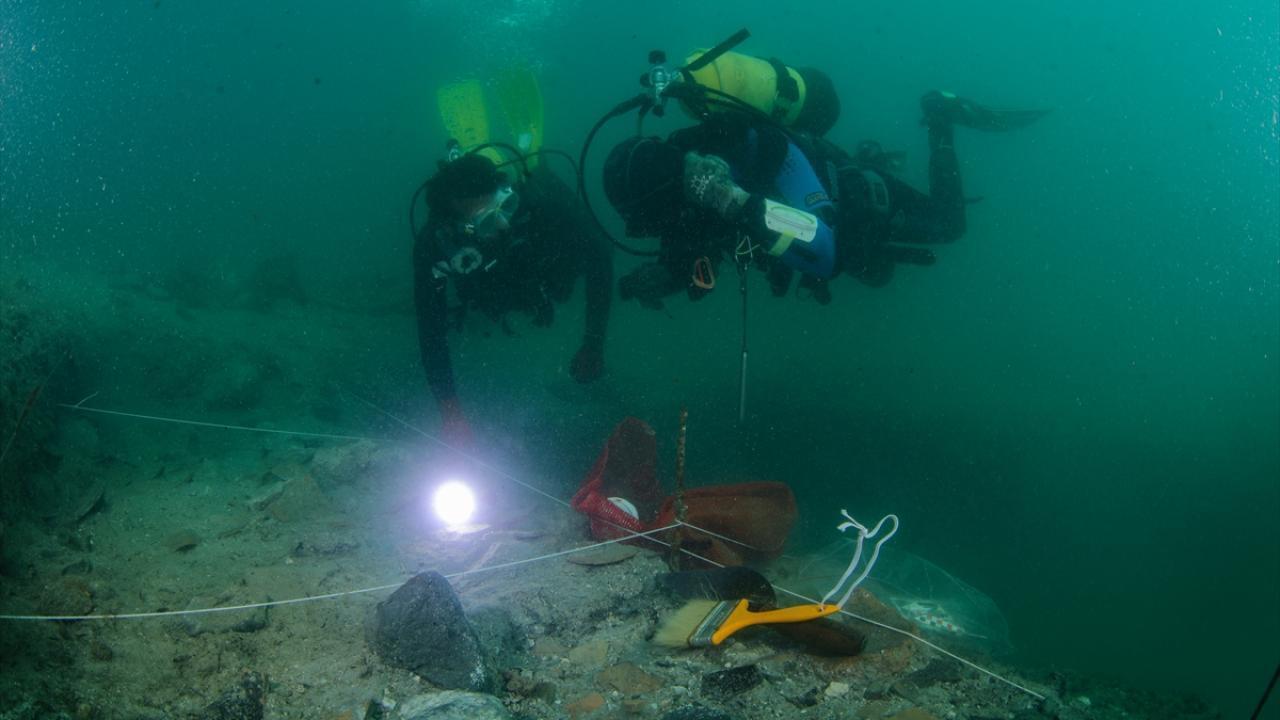
Underwater archaeologists are investigating a prehistoric port settlement off the Aegean coast of the western city of İzmir, revealing discoveries from 5,300 years ago.
Located in the city's Urla district, Liman Tepe is among the first archaeological centers in Türkiye where both land and underwater excavations are conducted.
Land excavations at the site began in 1992, while underwater work has been ongoing since 2000. Once serving the same role as İzmir’s modern port, Liman Tepe preserves archaeological layers both on land and beneath the sea, offering vital clues about the region’s maritime history.
The head of the excavations, Professor Vasıf Şahoğlu, director of Ankara University’s research center for maritime archaeology, emphasized the importance of the site as Türkiye’s first underwater harbor excavation.
“We discovered that a significant portion of Liman Tepe is submerged,” he said, noting that this year’s work is focused on the harbor and breakwater of the ancient city of Klazomenai, dating to the 6th century BC.
He explained that while the area was previously dated to around 2,600 years ago, deeper layers revealed much older finds.
“When we reached the 6th-century layers, we opened a test trench and, about 1.5–2 meters below, uncovered remains dating back 5,300 years. This helps us understand coastal changes and tectonic activity over time,” Şahoğlu said.
He added that the now-submerged zone was once dry land, later covered by rising sea levels and tectonic shifts.
“Underwater excavations give us a complementary perspective to what we learn on land,” he noted.
On land, excavations have revealed fortified settlements with longhouses used for both living and production.
“These houses were built in blocks of six with shared walls, separated by streets. Inside, there were hearths, and the structures were also used as workshops for metal, ceramics and textiles,” Şahoğlu explained.
Currently, underwater archaeologists are excavating a 32-square-meter area about seven meters deep, conducting up to eight dives per day.
Associate Professor İrfan Tuğcu, who has been diving at Liman Tepe since 2000, described the field method as “turning archaeologists into divers rather than divers into archaeologists.”
“We are excavating 32 square meters underwater, about five meters below the seabed. Every day, two or three divers per session carry out each dive,” Tuğcu said. “We start in the morning with a briefing on who will work where, and throughout the day, we hold progress meetings to coordinate the process.”
Excavations at the site continue to shed new light on Anatolia’s oldest port city opening to the Aegean, revealing how coastal life and maritime activity evolved over the years.